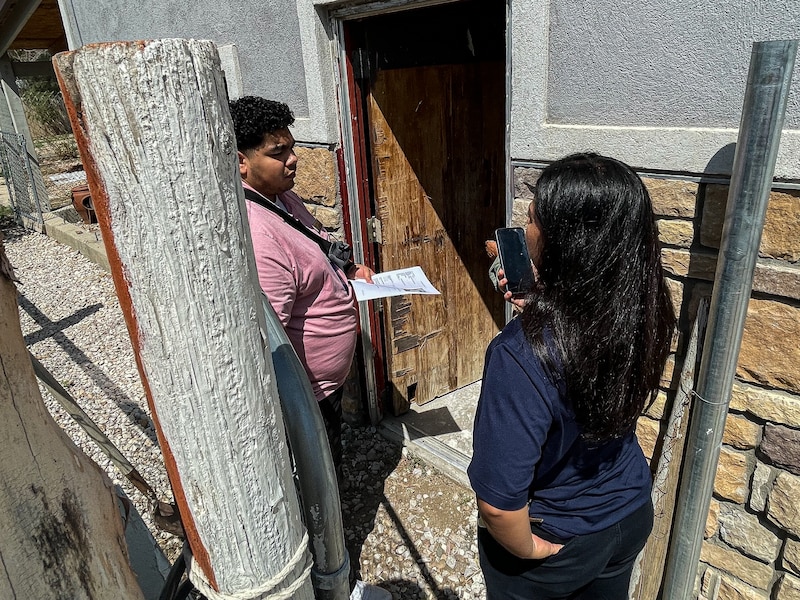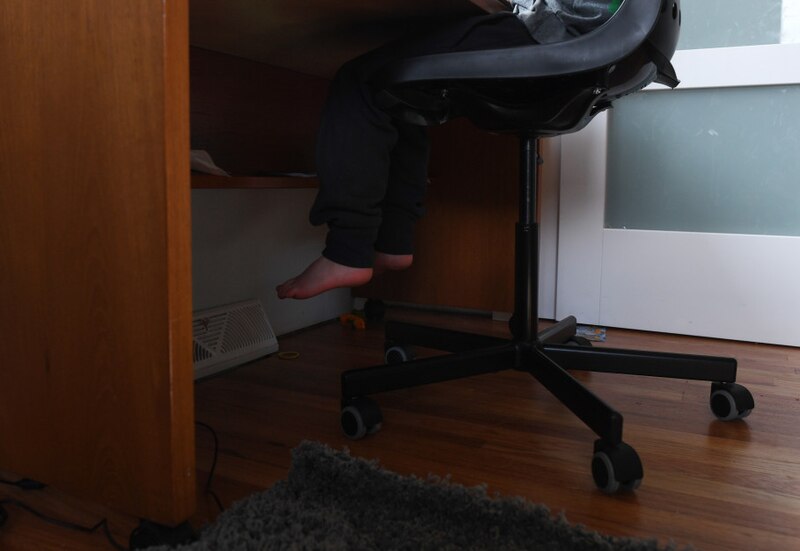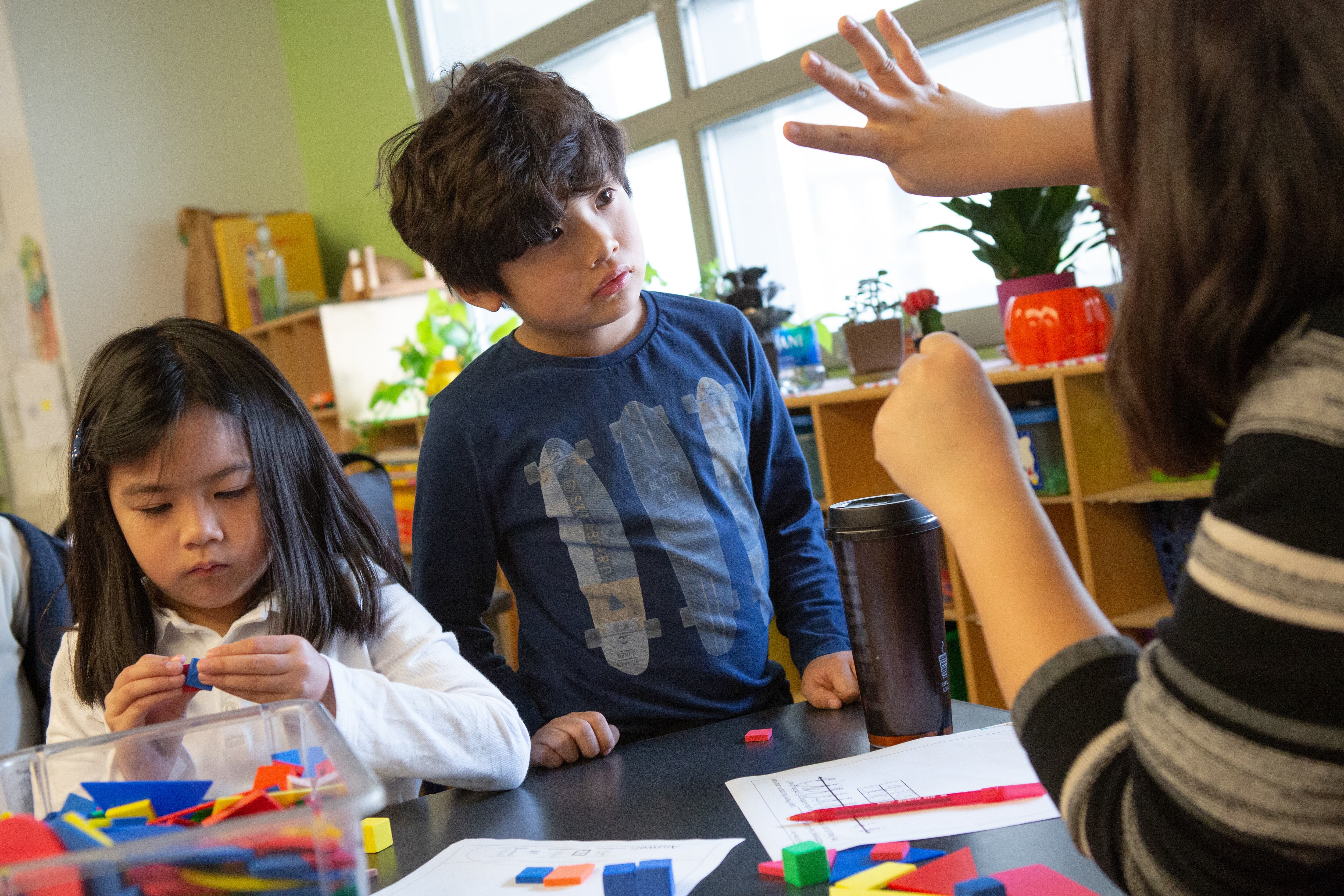Chalkbeat is a nonprofit news organization covering public education in communities across America. Subscribe to our free Colorado newsletter to keep up with education news from around the state: ckbe.at/subscribe-colorado
Kindergarten enrollment is down. Dropout rates are up. Public school enrollment still hasn’t rebounded to where it was in 2019, before COVID turned education upside down.
Where have the kids gone? A new analysis by The Associated Press and Stanford University’s Big Local News project found an estimated 230,000 students in 21 states absent from publicly available data on public and private school enrollment and home schooling. That tally includes as many as 9,000 uncounted in Colorado, or about 1% of the state’s school-age children.
The uncounted likely include students learning in private school and at their kitchen tables who simply haven’t been reported, along with children who aren’t in school at all.
The findings further illustrate the pandemic’s profound impact on education, with some families rethinking their options and other students struggling to stay connected. They also demonstrate the difficulty of getting a full picture of where students have landed as a result of the upheaval.
States like Colorado where kindergarten is voluntary have many more unaccounted-for children than states where kindergarten is required, the analysis found. Birth rates have declined, meaning there are fewer 5-year-olds than even a few years ago, and thousands of families have moved out of state. But those changes don’t fully account for the decline in kindergarten enrollment.
More families could be keeping their 5-year-olds home even as Colorado prepares to launch a major expansion of public preschool.
“That’s important because kindergarten is the first experience kids have with a formal learning environment, and readiness to learn is really important as they move onto older grades,” said Thomas Dee, a Stanford University education professor who worked on the analysis.
At the other end of their school careers, more Colorado students are dropping out, state data shows, with 10,500 middle and high school students leaving the system in 2021-22, a 23% increase from 2019-20 and the highest dropout rate in four years.
Chronic absenteeism is up too, said Johann Liljengren, the state education department’s director of dropout prevention and student re-engagement.
“We definitely are seeing higher levels of disengagement across various measures, from attendance to dropouts,” Liljengren said. “What we’re trying to do is dig in and find out why and can we see some of those kids come back?”
The analysis used enrollment and U.S. Census data to look at changes from 2019-20 to 2021-22 and doesn’t include the current school year.
State data shows home school declining from its peak in 2020, and private school enrollment is nearly flat, raising questions about where other students who left the public system may have gone. But state education officials acknowledge their data on both student populations is “loose.”
Private schools don’t have to report enrollment, and more than 30% of 700 non-public schools in a state database report no information, potentially accounting for thousands of students. Home-school families are supposed to notify a school district every year of their intentions, but not all do.
Van Schoales, senior policy director at the Keystone Policy Center, said the gap is a symptom of Colorado’s lax approach to data collection. Without better information, it’s hard to know what’s happening or what to do about it, he said.
“We don’t know what the problem is,” Schoales said. “Is the problem that younger parents entering the school system during COVID had bad experiences and don’t trust the system? Or is the problem that high schools abandoned kids who were on the brink? Or maybe parents are making different choices.”
Kindergarten slide raises concerns
Colorado Gov. Jared Polis made improving early childhood education a centerpiece of his administration. He made full-day kindergarten free to parents in 2019 and enrollment surged, only to plummet the following year when many school districts started the year remotely.
Kindergarten enrollment rebounded somewhat in 2021-22 school year that was included in the Associated Press/Big Local News analysis — only to drop again this school year. But even in 2021-22, the share of 5-year-olds who weren’t in kindergarten was higher than before the pandemic. (Demographers caution that population estimates are imprecise.)
In 2019-20, fewer than 2% of Colorado 5-year-olds weren’t in public or private kindergarten. In 2021-22, roughly 4% were not enrolled.
The decline in participation is a concern, said Leslie Colwell of the Colorado Children’s Campaign. But without more information, it’s hard to know if vulnerable children are missing out on key early learning opportunities or if families with more resources are “red-shirting” or holding back their kindergarten-eligible children or enrolling them in private options, she said.
Complicating the kindergarten trends, enrollment in both preschool and first grade are up this year. The launch of universal preschool in August could bring thousands more children into the public school system with part-time free care.
Who’s not in school?
State data gives some insight into how public school enrollment is changing. The largest decrease is among white students. There are 30,000 fewer of them in Colorado public schools this year than in 2019-20. The largest percentage decrease is in Native American students.
Dropout rates increased among all student groups but increased most among Hispanic and Native American students. Hispanic students accounted for more than half of all Colorado students who left school last year without graduating. Some school districts have stepped up efforts to find and bring back students who left school to work or who just didn’t see the point.

Liljengren said state education officials are also revamping how they do their work — bringing together sections that once worked in isolation to better use data to identify students in trouble and to support high schools in revamping their programming to keep students engaged, including with more pathways tied to career options.
But enrollment isn’t down everywhere. Alan Smiley, who heads the Association of Colorado Independent Schools, said the 39 schools his association accredits have seen enrollment grow between 1% and 3% a year since 2019, including families who have moved to Colorado as well as those switching from public school.
Families are attracted to small class sizes, specialized programming, and school environments that reflect their values, he said. Many start in preschool with the intention of remaining in one school for years. His members watch demographic trends just as other school officials do but haven’t seen the declines public schools report.
Regardless of the choices families make, public school enrollment is not expected to rebound anytime soon. There are 79,000 18-year-olds in Colorado, but just 67,000 5-year-olds, according to U.S. Census data provided by state demographer Elizabeth Garner.
Colorado home-school trends are hard to track
Joanna Rosa-Saenz was among more than 15,000 Colorado families who reported home schooling in the 2020-21 school year. She started out running a learning pod from her Denver home and continued after schools opened. She worried about vaccine mandates and wanted to be more hands-on with her children’s education, especially after her middle son fell behind when his school didn’t address his special education needs.
Her children are back in Denver Public Schools this school year. As a single parent, she couldn’t educate her children and support them financially and get more than a few hours sleep a night, she said. And she couldn’t afford tuition at the private Christian schools that most appealed to her.
The state’s official count of home-school students has gone down each of the past two years — perhaps reflecting parents like Rosa-Saenz who could not sustain it — but Stephen Craig, executive director of Christian Home Educators of Colorado, said his membership is holding steady after a notable increase in 2020.
Rosa-Saenz said she knows many home-schooling families that are still going strong. Some didn’t like what their kids were being taught or the political direction of their district. Others were frustrated by high teacher turnover and frequent leadership changes. Still others felt a public school education just wasn’t very good.
“Parents have a lack of trust and so they are pulling their kids out and seeing what they can do to really support them,” she said.
Public school approaches on everything from math instruction to gender have alienated conservative parents, Craig said. Families want an education tailored to their child and their faith.
“For too long we’ve put education in its own box and said 2 plus 2 is 4 and that’s not religious,” he said. “And that’s just not true. Our world view is in everything.”
Tracking these students is tricky. Some families may not report. The Christian home educators group advises families they are not legally required to report if their children are being taught by a parent who is a licensed teacher — an interpretation of the state’s compulsory attendance law supported by the Homeschool Legal Defense Association. State education officials told Chalkbeat they interpret the home-school statute to mean such families should still notify a school district.
Colorado’s public school enrollment data also includes thousands of home-school students who take a class or receive a service from a local public school. That means the real number of home-school students is higher and the real number of public school students lower than publicly available data suggests.

Enrollment declines are cause for concern
Regardless of the exact number, missing students and disengaged families demand attention, observers said. Schools connect students not just with education but also with meals, medical care, and community. Schools with fewer students also get less money. Many Denver metro area districts have closed schools or plan to.
Polling data that the conservative education group Ready Colorado expects to release this month shows a big increase in parents concerned that schools are on the wrong track. That aligns with a Magellan Strategies poll from last spring — though the reasons for dissatisfaction were diverse.
Ready Colorado President Brenda Dickhoner said she knows more families who thought private school was out of reach but re-examined their options as they grew less satisfied with their local public school.
“I’m less concerned with whether Joey is in private or public school, but I’m really interested in understanding the parent motivations,” she said.
Colwell of the Children’s Campaign said she worries that more families may be opting out — even though the vast majority of Colorado families continue to enroll in public school.
“We want kids to be connected to high-quality learning opportunities,” she said. “For families to make the choice that they’ll disengage entirely, to see an increasing number of families making that choice in the wake of the pandemic and the political environment, is concerning.”
Bureau Chief Erica Meltzer covers education policy and politics and oversees Chalkbeat Colorado’s education coverage. Contact Erica at emeltzer@chalkbeat.org.






